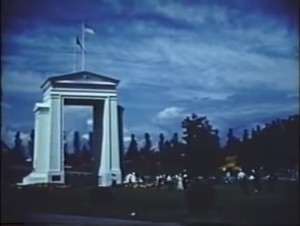
"Local sights and events in the White Rock area, such as parades, celebrations at the International Peace Arch, fashion show, recreational activities, etc." British Columbia Archives.
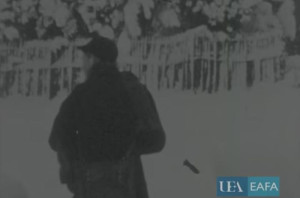
'Scenes of Frinton covered in snow and ice. A man plays with a dog and people dig paths through the snow. People attempt to walk through the snow; some out to enjoy themselves, others seeking to carry out a normal routine of shopping and other daily business. A man tries to unlock his frozen car. In the town centre there is a shop with a 'sale' sign in the window. The area is practically deserted. Hammonds' filling station is covered in snow and deserted. A lorry attempts to drive through the snow, but is having to rely on a push. One vehicle that does manage to take to the road is a Land Rover. Finally, a snow-covered St. Mary's Church and frozen power cables brought down by the severe conditions' (EAFA).
"by far the most ambitious yet attempted by this society. Being in the nature of a romantic drama it includes such varied scenes as a motor works in London, the Sahara Desert, and a yacht in the Mediterranean" (HMHT 1933: 120).
"Green Christmas is a seven-minute gift from Roy Martin of Annandale, Va., done to the tune of Stan Freberg's recording of the same name. Clever animation and a wide use of imagination make this almost-too-long film quite entertaining. You'll like this version of how commercial Christmas can get. It's in glorious Christmas color" PSA Journal, Nov. 1969, 57.
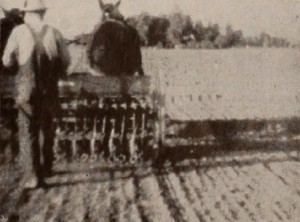
"To impart life and interest to a film about growing alfalfa requires more than ordinary patience and perseverance. Mildred J. Caldwell has supplied these in her picture, Green Gold. Filmed throughout the year, it shows the plowing, seeding, mowing, bundling and threshing, to create a story with depth and perspective. There were times when the movie maker had to climb on stacks of baled alfalfa or ride on a lumbering machine while it performed some vital operation in the culture of alfalfa. Hemet Valley, in California, was the setting, providing pleasant scenic backgrounds for the different operations." Movie Makers, Dec. 1947, 537-538.
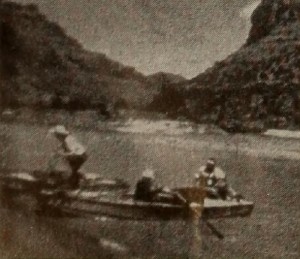
"Louise M. Fetzner is a housewife who plainly likes the thrills of running the rapids down dangerous rivers while she makes movies that really move! In Green River, Mrs. Fetzner has a well paced, well photographed and altogether literate account of the adventures which she and her companions had on the Colorado's main tributary. The film is interesting and exciting, and tells its story concisely and without padding. The accompanying narrative is written and delivered effectively, although occasionally the level of the background music rises to overwhelm the narrator's voice." Movie Makers, Dec. 1953, 344.
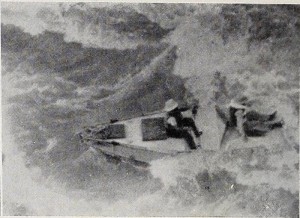
"Al Morton has conquered another river. This time it is the unruly turbulence of the Green River in Utah. Not content to be simply a passenger, Mr. Morton built his own boat (and named it Movie Maker!) for shooting the rapids, one of three craft making up the river party. Green River Expedition is a record of lazy, sunny days on quiet stretches, of motor trouble and of scenery along the banks, of back breaking portages where the rapids are too dangerous to maneuver, and finally of the breath taking excitement of riding the tumultuous waters. To partake of this dangerous sport would seem accomplishment enough, but Mr. Morton puts it all on film as well, in about as sparkling, steady photography as one will ever see. The narrative accompaniment, while informative concerning the technique of river boating and the historical background of the surrounding country, seemed overfull. It is enough, in parts, to devote one's whole attention to the thrilling action on the screen." Movie Makers, Dec. 1950, 464.
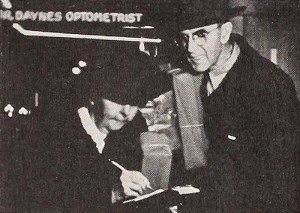
"A delightful film of the home is A Greene Christmas, produced by Mildred Greene. Here is a record of a domestic Christmas that may well serve as an exemplar to other movie makers who are tempted to wander far afield. No startling new stunts in technique or effects of continuity are displayed, yet the film is so homelike, pleasant and sincere that it commands recognition as an achievement. Naturally, however, all departments which contribute to the completion of the film are more than adequately handled. The interior lighting, which resulted in perfectly exposed color shots in the familiar home settings, is noteworthy. Special recognition should be accorded the successful, well exposed shots of the subjects out of doors at night in one sequence. All the actors, members of her immediate family and friends, including the producer, were naturally and pleasantly shown, but the palm for outstanding characterization must go to Miss Greene's mother, who played the part of herself in a most delightful and unaffected way. The preparation of the color titles for this film deserves special mention because of their perfect exposure, fine backgrounds and outstanding arrangement of metal script letters. (Miss Greene tells about making A Greene Christmas in Stretching Christmas, in this number of Movie Makers.)" Movie Makers, Dec. 1939, 609.
Total Pages: 203